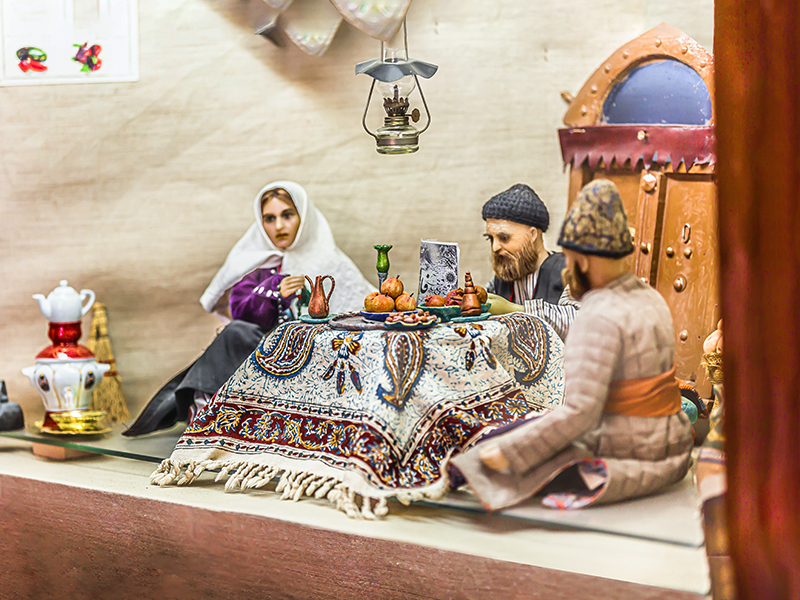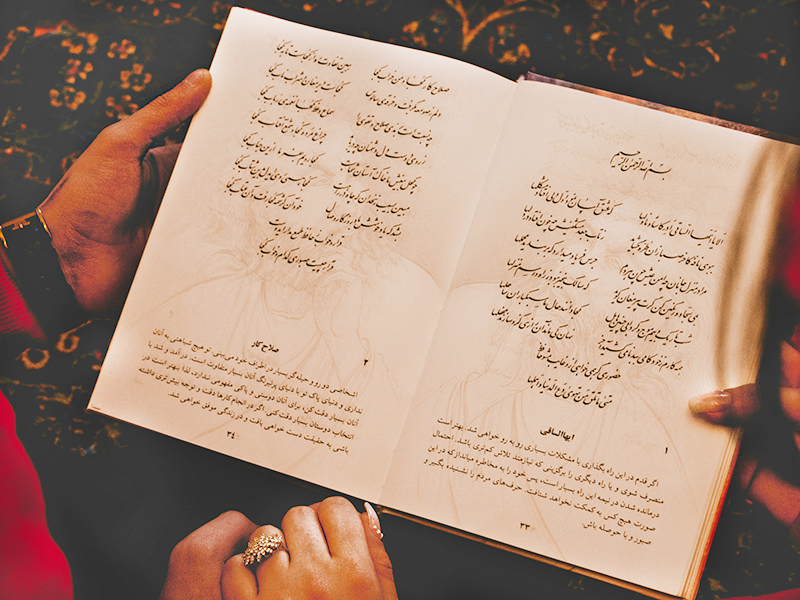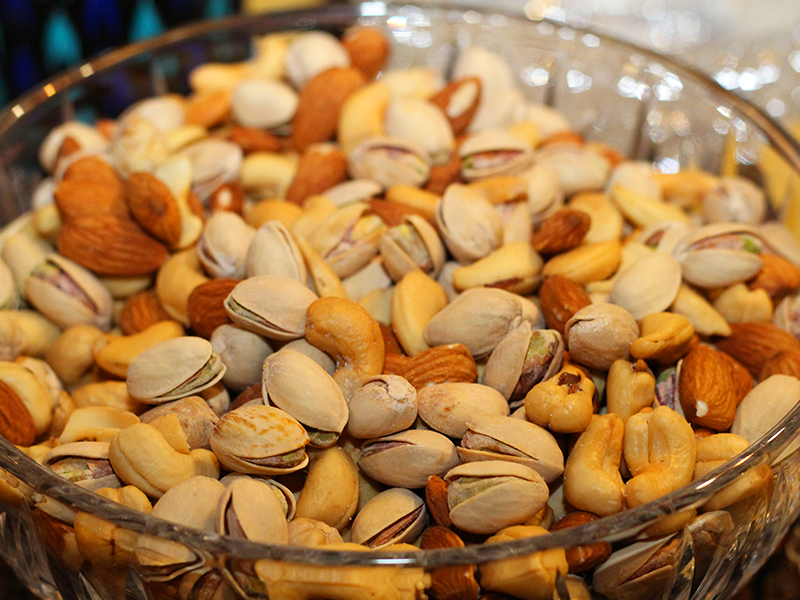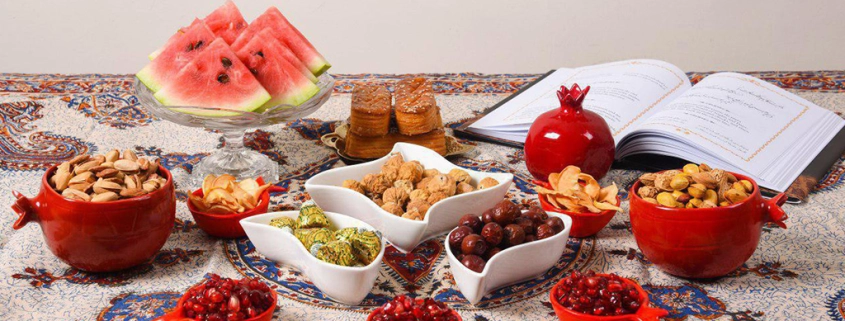Yalda Night Festival: Meaning, Food, Traditions, Date
Yalda Night, one of the most important Iranian celebrations, has a rich historical legacy dating back millennia, long before the birth of Christ. Originating in an era when agriculture played a central role, the sun and its light symbolized prosperity.
Iranians, along with some neighboring countries, celebrate Yalda as the longest night of the year and participate in festive gatherings. The celebrations and night-long festivities held across the country during this occasion constitute a time-honored tradition that not only retains its importance but has also gained a special place in the hearts of Iranians.
Join us as we delve into the customs, fruits, sweets, nuts, and delicacies associated with Yalda Night, providing a closer look at this beautiful and ancient celebration.
Yalda Night History
The history of Yalda Night goes back to ancient times, although its exact origins remain unclear. Some archaeologists believe Yalda Night has a history dating back seven thousand years, referencing pottery artifacts from the prehistoric era. These pottery items have animal motifs associated with Iranian months, such as goats and scorpions.
While these motifs are scarce in inscriptions and archaeological findings, experts believe that traces of the Yalda Night ritual can be traced back to seven thousand years ago.
Despite the ancient roots, the official recognition of Yalda Night dates back approximately 500 years before Christ. Yalda was introduced into the official calendar of ancient Iranians during the reign of Darius the Great. This calendar was derived from the Babylonian and Egyptian calendrical systems, reflecting the cultural exchange of the time.
How Is Yalda Celebrated?
Yalda Night is celebrated in Iran with joyous gatherings and cherished traditions. Families and friends come together to mark the longest night of the year, and the festivities often include a special meal with dishes like herbed rice and fish.

The centerpiece of the celebration is the colorful Yalda spread. Storytelling, poetry recitation, and Shahnameh readings add cultural depth to the evening and strengthen a sense of togetherness. Lighting candles and staying up late into the night are common practices, symbolizing the victory of light over darkness.
Yalda Night is a time for joy, reflection, and the sharing of warmth among loved ones.
What Is the Meaning of Yalda Night?
Yalda, derived from the Syriac word meaning “birth” or “nativity,” finds its linguistic roots in the Syriac language that was common among early Christians. This etymology is discovered through examination of dictionaries and historical texts.
Abū Rayḥān al-Bīrūnī, a polymath and calendar scholar, refers to Yalda Night as the “birth of the greater sun,” interpreting the name as the birth of the sun. His insights are documented in the book “Āthār al-Bāqiyah.” In this work, Abū Rayḥān explores the calendars and festivities of various societies.
While the exact time and manner in which the term “Yalda” entered the Persian language remain unclear, historical records suggest that early Christians facing hardships in Rome migrated to Iran. Due to cultural proximity, the Syriac word found its way into Persian, becoming the term we use to refer to this ancient celebration today.
Shab-e Yalda or Shabe-e Cheleh
The night of “Cheleh” is synonymous with Yalda Night. It is because, starting from the night of Yalda, the major winter period known as “Cheleh” begins and is referred to as the Cheleh night.
In ancient times, Iranians followed a comprehensive calendar, especially relevant to agricultural and animal husbandry activities. They recognized two seasons called “Cheleh.” The summer Cheleh began from the month of Tir, and the winter Cheleh commenced from the month of Dey.
Each Cheleh was further divided into two periods: the major Cheleh and the minor Cheleh. The first forty days were considered the major Cheleh, followed by the next twenty days as the minor Cheleh.

The major winter Cheleh, starting immediately after Yalda Night, marks the beginning of winter with extreme cold. It continues until the tenth day of Bahman. Next, the minor Cheleh starts and continues until the first day of Esfand. The cold during the minor Cheleh is less intense and causes less damage.
The last four days of the major Cheleh and the first four days of the minor Cheleh are known as “Char-Chaar,” representing the peak intensity of cold during this period. The last four days of major calamity and the first four days of minor calamity are known as “char chahar,” which indicates the peak of cold in this period.
Yalda Night Meaning
Yalda Night, which is rooted in ancient traditions, has a deep significance for Iranians. The word “Yalda” itself, originating from Syriac, means “birth” or “nativity.” Yalda Night is believed to date back thousands of years. The celebration marks the longest night of the year, symbolizing the victory of light over darkness.
Iranians and neighboring communities come together on this special night, engaging in festive gatherings that include storytelling, enjoying seasonal fruits, and partaking in age-old customs. Yalda Night serves as a cultural bridge connecting past and present when families and friends celebrate the warmth of being together and the hope for brighter days ahead.
Yalda Night Traditions
Yalda Night traditions have remained relatively unchanged over time.
Fire Gathering
In ancient times, people gathered around a fire. Nowadays, heaters warm the gathering instead. Fire used to symbolize the sun, and lighting it was a ritual to honor and preserve its warmth. Some also believed that the fire helped dispel the darkness and evil spirits.
Storytelling on Yalda Night
A tradition known as “Masal-Gooyi,” which was similar to poetry reading and storytelling, was a common practice in the past. Families would come together, and the elders would share stories. These stories often revolved around mythical creatures and beings, providing entertainment and delight for the children.
Hafez Fortune-Telling
The poetry of Hafez holds a special place on Yalda Night and is often present on the festive table. Guests gather, express wishes for joy to Hafez’s spirit, and open his poetry to seek insights into their future.

Considering that Hafez’s verses are known for their mystical, romantic, and hopeful content, these fortune-tellings usually uplift spirits.
Shahnameh Reading
An integral part of the Yalda night is reading the Shahnameh, the epic Persian Book of Kings. This tradition has deep roots in Iranian culture and is usually performed in a melodic, storytelling manner, enhancing the appeal of the epic tales.
What Do Iranian People Do on Yalda Night?
The customs and traditions of Yalda Night in Iran are different from other countries, as each nation’s residents organize their own celebrations and ceremonies based on their unique cultures and backgrounds. It is customary in Iran to prepare special dishes on Yalda Night, such as herbed rice and fish.
Additionally, Yalda Ajil, a mix of four nuts including pistachios, almonds, walnuts, and hazelnuts, is served alongside other treats, complemented by watermelon and pomegranate seeds on the colorful Yalda Night spread. These celebrations bring family and friends together and create a warm and happy atmosphere as Iranians celebrate the longest night of the year with these cherished culinary traditions.
Yalda Night Fruits
Fruits play a prominent role on the Yalda Night table, with a special emphasis on vibrant red-hued fruits symbolizing the sun. Pomegranate is considered as the main fruit for the Yalda night, and in ancient times, it was respected for its symbolism of fertility and abundance, drawn from its plentiful seeds.
Its red color represents happiness and the sun, and consuming pomegranate on Yalda Night is believed to be linked to the magical influence of its spread. Watermelon, another fruit of the Yalda table, also has the same vibrant red hue, serving as a symbol of the sun and a reminder of the warmth of summer and its heat.
Yalda Night Food
One of the most enchanting rituals of Yalda Night revolves around the festive table and its delectable offerings. The Yalda Night spread includes specific fruits, special nuts or Persian Trail Mix (known as “Ajil”), and various foods.

In ancient times, a Yalda table called “Mizd” was set on the night of Chelleh. They would arrange a variety of fresh and dried fruits, along with the traditional Ajil or “Lork,” which played a main role and was essentially considered the feast of the celebration.
Other components of this table included a container for fire (Aatishdan), a vessel for scents (Atardan), a container for seeds (Bokhordan), and a “Barsem,” a tool used for reciting prayers made from a specific plant branch or crafted from metals like brass and silver.
Final Word
Yalda Night, which is the peak of autumn and the beginning of winter, holds significance as the longest night and heralds the lengthening of days. Celebrated in Iran and Persian-speaking countries, the customs and traditions surrounding Yalda are observed with great enthusiasm.
From the time of the Achaemenids, Iranians have accepted Yalda Night, and its cultural richness has gone beyond Iran to countries such as Afghanistan, Pakistan, China, South Korea, Peru, Scotland, Russia, Africa, and more.
As a festive bridge between seasons, Yalda Night brings people together to cherish the warmth of companionship, enjoy special foods, and participate in age-old rituals, symbolizing the triumph of light over darkness.
Are you planning to travel to Iran and looking for an Iran resort? Consider Matinabad Eco-resort.





Leave a Reply
Want to join the discussion?Feel free to contribute!